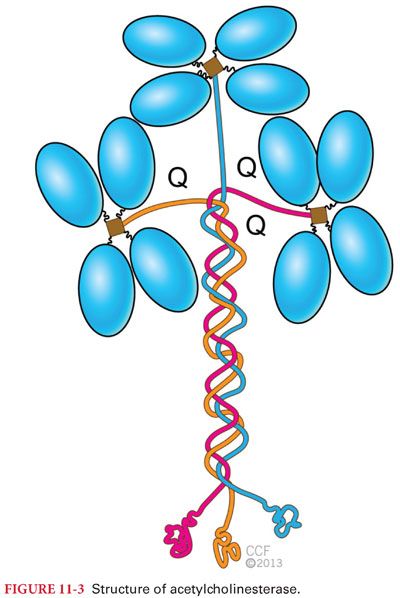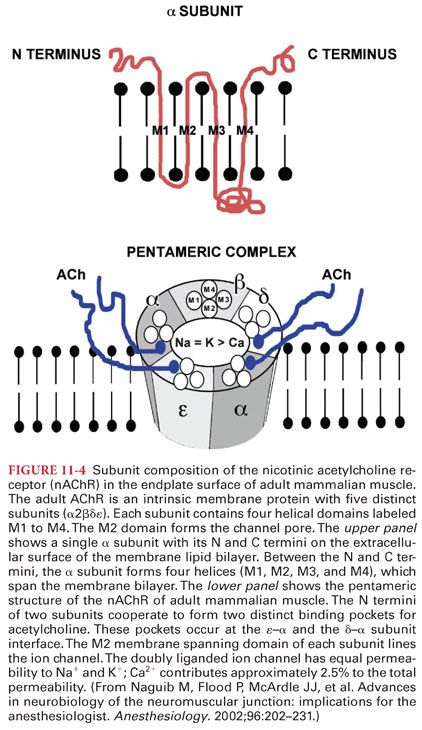IV. The neuromuscular junction (NMJ) or the endplate is a highly specialized synapse at which presynaptic motor nerve endings meet the postsynaptic membranes of skeletal muscles (motor endplates) (Fig. 11-2). The NMJ is designed to transmit electrical impulses from the nerve terminal to the skeletal muscle via the chemical transmitter, acetylcholine (ACh). Structurally, the NMJ is consisted of a three components: (a) the presynaptic (or prejunctional) nerve terminal containing synaptic vesicles (filled with ACh) and mitochondria; (b) the synaptic cleft that contains basal lamina to which acetylcholinesterase enzyme responsible for hydrolysis of free ACh is attached; and (c) the postsynaptic (or postjunctional) muscle membrane that opposes the nerve terminal.

A. Presynaptic Region
1. Synaptic vesicles are specialized secretory organelles (see Fig. 11-2). Each vesicle appears to contain 5,000 to 10,000 molecules of acetylcholine. Nearly 50% of the released acetylcholine is rapidly hydrolyzed by the acetylcholinesterase during the time of diffusion across the synaptic cleft.
B. Synaptic cleft separates nerve and muscle fiber plasma membranes (Fig. 11-3). Acetylcholinesterase ranks as one of the highest catalytic efficiencies known (4,000 molecules of acetylcholine hydrolyzed per active site per second) at near diffusion-limited rates.

C. The Nicotinic Acetylcholine Receptor at the Neuromuscular Junction (Fig. 11-4).

1. Nondepolarizing neuromuscular blocking drugs bind to one or both α subunits, but unlike acetylcholine, lack agonist activity (competitive blockade).
a. As a result, conformational changes do not occur, and the receptor channel remains closed.
Stay updated, free articles. Join our Telegram channel

Full access? Get Clinical Tree


